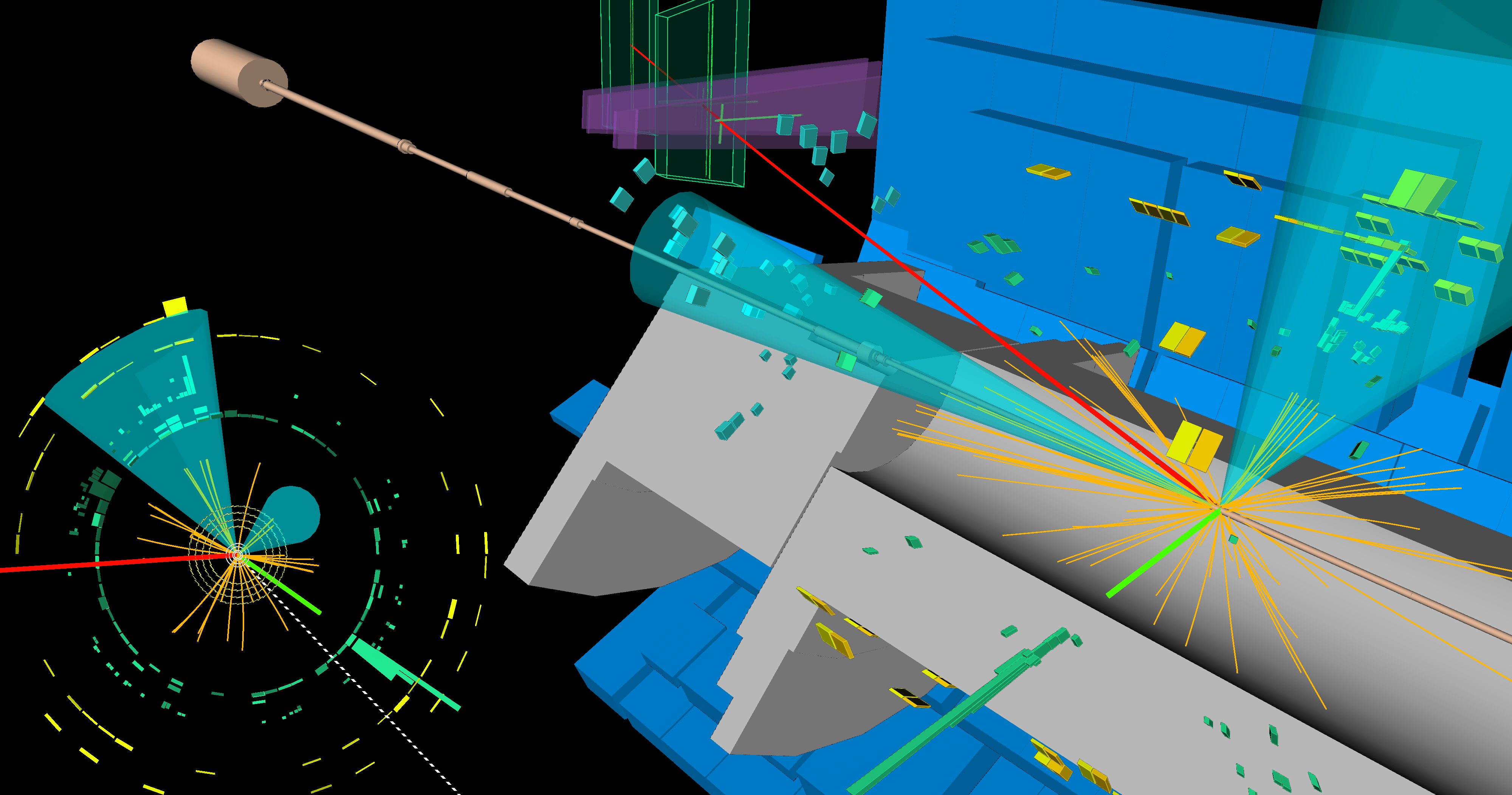ATLAS moves into top gear for Run 3
30 November 2022 | By
After over three years of upgrade and maintenance work, the Large Hadron Collider began its third operation period of operation (Run 3) in July 2022. Since then, the world’s most powerful particle accelerator has been colliding protons at a record-breaking energy of 13.6 TeV. The ATLAS Collaboration has just released its first measurements of these record collisions, studying data collected in the first half of August 2022.
ATLAS researchers have measured the interaction strength (or cross-section) of two well-known processes: the production of a pair of top quarks and the production of a Z boson. These measurements provide an essential understanding of the theory that describes the strong and electroweak interactions, and test its predictions. Moreover, these early measurements have provided an opportunity to validate the functionality of the ATLAS detector and its reconstruction software, which underwent a number of improvements.
For this highlight result, presented today at the LHCC meeting, physicists focused on Z-boson decays to electron and muon pairs, and top-quark-pair decays to a W boson and a jet – collimated sprays of particles – originating from a bottom quark (called b-jets). The desired W boson signal subsequently decays into a one charged lepton (in this case, an electron or muon) and an invisible neutrino. As the analysis uses very early Run 3 data (1.2 fb-1), physicists relied on “preliminary” calibrations of the leptons, jets and luminosity. These were derived quickly after the first data became available. The calibration, and corresponding uncertainties, will be improved as more data are processed. Future updates of the calibration will allow researchers to measure the cross-sections with greater precision.
This first ATLAS Run 3 result probed the top-pair and Z-boson production cross-sections at a new centre-of-mass energy – and proved a valuable tool for validating the detector’s many upgrades.

The ATLAS Collaboration measured the cross-section of top-pair production (σtt) to be 830 ± 12 (stat.) ± 27 (syst.) ± 86 (lumi.) pb, the cross-section of Z-boson production (σZ) to be 2075 ± 2 (stat.) ± 98 (syst.) ± 199 (lumi.) pb, and the ratio of both processes (σtt/σZ) to be 0.400 ± 0.006 (stat.) ± 0.017 (syst.) ± 0.005 (lumi.). These values are in agreement with the Standard Model prediction within the uncertainties. By combining the top-pair and Z-boson production cross-section measurements, physicists were able to partially cancel out the large luminosity uncertainties as well as some of the experimental uncertainties. The ratio is sensitive to the inner structure of the proton and provides a constraint on the relative probabilities that reactions are initiated by quarks and gluons.
To validate their results, physicists performed a series of cross-checks. This included measuring the ratio of the cross-section in individual “fills” of the LHC (that is, each time the LHC was injected with a new fill of protons for a data-taking run). These tests showed very consistent results, validating the obtained values. The final result, as well as the results of the individual checks, are shown in Figure 1.
This first Run 3 result proved to be a valuable tool to validate the ATLAS detector’s many upgrades. Most importantly, this analysis probed the top-pair and Z-boson production cross-sections at a new centre-of-mass energy, assessing the consistency of the data acquired with the Standard Model prediction. More analyses using the Run 3 data will follow, exploiting the unprecedented energies and the increased LHC dataset.
Learn more
- Measurement of the tt¯ cross-section and tt¯/Z cross-section ratio using LHC Run 3 proton-proton collision data at a centre-of-mass energy of 13.6 TeV (ATLAS-CONF-2022-070)
- LHCC Presentation by Trevor Vickey: ATLAS Status Report
- See also the full lists of ATLAS Conference Notes and ATLAS Physics Papers.




